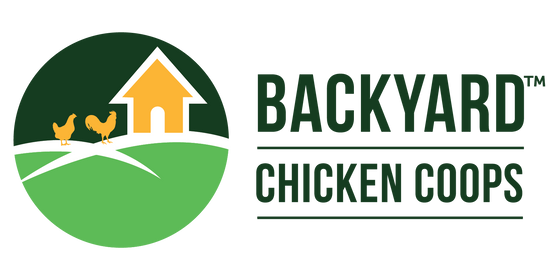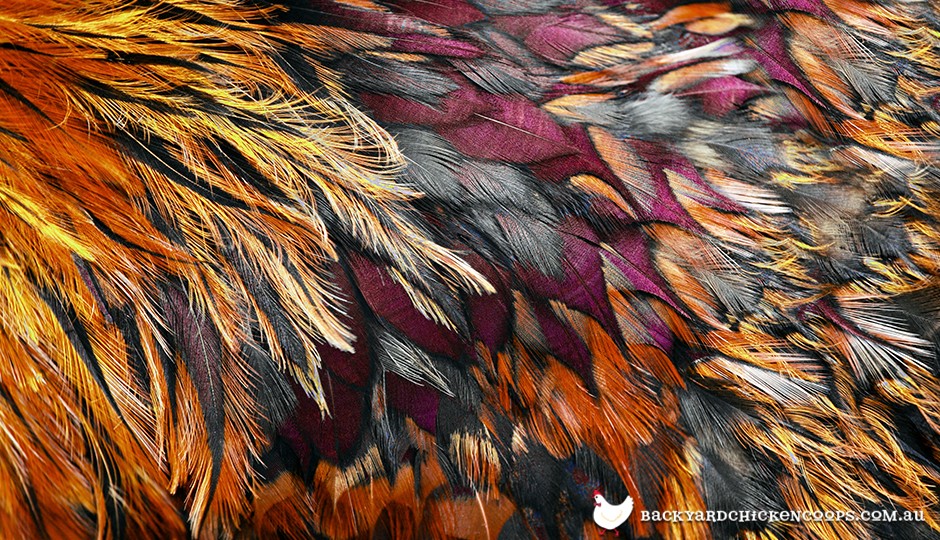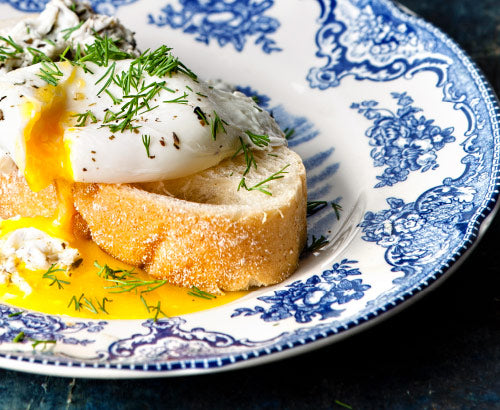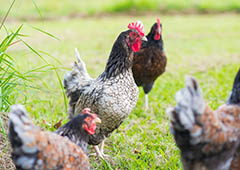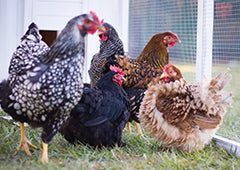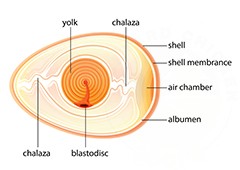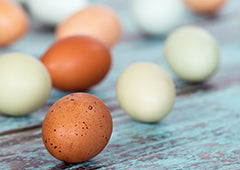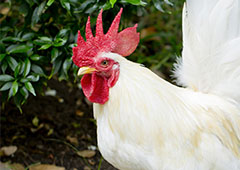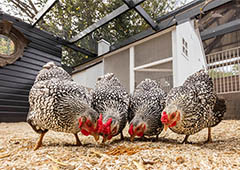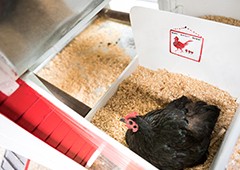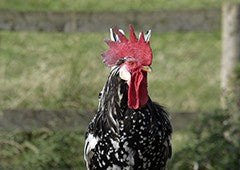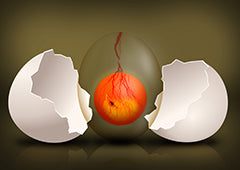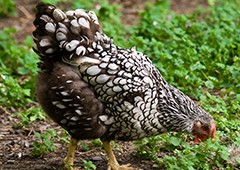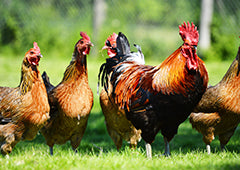Feathers are a feature that are unique to birds, and while they may look pretty and add to the overall aesthetic appeal of a chicken, they do serve other important purposes. Despite most chickens having poor flight, feathers do serve the purpose of allow fowl to fly. They also act as a form of insulation- keeping chickens warm in cold weather, as well as protecting them from the sun’s harsh rays. Many chickens will also use their fantastic feathers as a way of attracting a mate of the opposite sex- ooh la la!
There are four main types of feathers that adorn a chicken’s body: down feathers, contour feathers, semiplumes, and filoplumes. Each structured differently, and serving their own particular purpose.
Down Feathers
The down of a bird are the very fine layer of feathers that cover young birds, and are found under the tough exterior feathers of older birds. These feathers cover a chickens abdomen, with their loose structure trapping air and insulating the bird against heat loss- like an extra feathering layer!
Contour Feathers
Contour feathers are the outermost feathers on a bird, covering the wings, tail and body. They make up the colour and shape of a bird, and are used to help distinguish a breed. Each contour feather has a well developed shaft with barbs branching off from them. There are tiny barbules that radiate from the barbs, which will lock together to create a smooth and neat plane. Some breeds have differently structured contour feathers that will change their appearance, and distinguish them as a particular breed. For example, the contour feathers of a silkie have more delicate shafts and unusually long barbs, and the barbules are elongated and arranged irregularly- giving them their soft feathered and fluffy appearance. Frizzled feathers curl and grow out, rather than laying flat and smooth, following the contour of the chickens body.
Hackle Feathers
Hackle feathers are a type of contour feather and can be distinguished as the long, fine feathers covering the chickens neck and saddle.
Primaries
The outer feathers of the dominant flight feathers are known as the primaries, and these are the largest and strongest of the flight feathers. They grow out from the end of each wing- the ‘hand’ area of the wing.
Secondaries
Secondaries are the inner flight feathers, positioned behind the primaries and grow out from the ‘forearm’ area of the wing. These feathers provide lift in both the soaring and flapping functions of flying.
Semiplumes
Semiplume feathers are found hidden between contour feathers that cover the body, and act as extra insulation for the bird to keep them warm. They also help maintain the smooth and streamlined appearance of the bird. They have a shaft like contour feathers, but not the hooks that hold the barbs together, so they get the soft appearance of down feathers.
Filoplumes
These are situated at the base of each contour feather and are stiff and hair-like in appearance. Filoplumes lack specific feather muscles, but are supplied with nerve-endings that react to help keep the contour feathers in position.
There really is more than meets the eye when it comes to a flocks fascinating feathers, so be sure that your chickens are meeting their dietary requirements to keep them in tip top condition!
There are so many things to consider when it comes to keeping your flock happy and healthy! As chicken keepers, we all want to do an eggcellent job when caring for our feathered friends. Many chicken keepers struggle to handle chicken health or behaviour issues, especially in the first few years of having a flock.
This is why I recommend Chickenpedia to all my readers. They have comprehensive online courses on everything you didn’t know you need to know and then some more! From healthcare to raising baby chicks to feeding and behavior, you’ll find beginner-friendly courses that’ll give you the knowledge and confidence to successfully look after your chickens.
As a member, you will get access to ALL their fantastic courses. No need to wing it, become the ultimate chicken eggspert! Check out Chickenpedia today!

